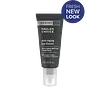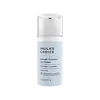What's inside
What's inside
 Key Ingredients
Key Ingredients

 Benefits
Benefits

 Concerns
Concerns

 Ingredients Side-by-side
Ingredients Side-by-side

Water
Skin ConditioningDimethicone
EmollientSodium PCA
HumectantHydrogenated Polyisobutene
EmollientAscorbyl Glucoside
AntioxidantSodium Polyacrylate
AbsorbentHydrogenated Lecithin
EmulsifyingGlucosyl Hesperidin
HumectantCopper Gluconate
Skin ConditioningTroxerutin
Skin ConditioningDisodium Rutinyl Disulfate
AntioxidantResveratrol
AntioxidantPalmitoyl Tripeptide-38
Skin ConditioningCaprooyl Tetrapeptide-3
Skin ProtectingGlycyrrhiza Glabra Root Extract
BleachingPhytic Acid
Beta-Glucan
Skin ConditioningAcetyl Glucosamine
Skin ConditioningTocopherol
AntioxidantAllantoin
Skin ConditioningAdenosine
Skin ConditioningDextran
Caprylic/Capric Triglyceride
MaskingSea Whip Extract
Skin ConditioningArctostaphylos Uva Ursi Leaf Extract
Skin ConditioningSalix Alba Bark Extract
AstringentPolyacrylate Crosspolymer-6
Emulsion StabilisingHydroxypropyl Cyclodextrin
MaskingXanthan Gum
EmulsifyingCetearyl Alcohol
EmollientMaltodextrin
AbsorbentBenzyl Alcohol
PerfumingPhenoxyethanol
PreservativeWater, Dimethicone, Sodium PCA, Hydrogenated Polyisobutene, Ascorbyl Glucoside, Sodium Polyacrylate, Hydrogenated Lecithin, Glucosyl Hesperidin, Copper Gluconate, Troxerutin, Disodium Rutinyl Disulfate, Resveratrol, Palmitoyl Tripeptide-38, Caprooyl Tetrapeptide-3, Glycyrrhiza Glabra Root Extract, Phytic Acid, Beta-Glucan, Acetyl Glucosamine, Tocopherol, Allantoin, Adenosine, Dextran, Caprylic/Capric Triglyceride, Sea Whip Extract, Arctostaphylos Uva Ursi Leaf Extract, Salix Alba Bark Extract, Polyacrylate Crosspolymer-6, Hydroxypropyl Cyclodextrin, Xanthan Gum, Cetearyl Alcohol, Maltodextrin, Benzyl Alcohol, Phenoxyethanol
Water
Skin ConditioningCaprylic/Capric Triglyceride
MaskingButylene Glycol
HumectantNeopentyl Glycol Diheptanoate
EmollientCetyl Palmitate
EmollientNylon-12
Propanediol
SolventAmmonium Acryloyldimethyltaurate/Vp Copolymer
Propylene Glycol Dibenzoate
Skin ConditioningPersea Gratissima Oil
Skin ConditioningBorago Officinalis Seed Oil
EmollientSodium Stearoyl Glutamate
CleansingSqualane
EmollientNiacinamide
SmoothingSalvia Hispanica Seed Oil
MoisturisingLinum Usitatissimum Seed Oil
PerfumingLimnanthes Alba Seed Oil
Skin ConditioningOlea Europaea Fruit Oil
MaskingPassiflora Edulis Seed Oil
EmollientCeramide EOP
Skin ConditioningCeramide NP
Skin ConditioningCeramide AP
Skin ConditioningSodium Hyaluronate
HumectantCholesterol
EmollientMorus Alba Root Extract
BleachingArctostaphylos Uva-Ursi Leaf Extract
Skin ConditioningGlycyrrhiza Glabra Root Extract
BleachingLinoleic Acid
CleansingLinolenic Acid
CleansingSerine
MaskingAlanine
MaskingProline
Skin ConditioningArginine
MaskingThreonine
Phytosphingosine
Skin ConditioningPhytosterols
Skin ConditioningSodium PCA
HumectantGlycine
BufferingOleic Acid
EmollientGlutamic Acid
HumectantLysine Hcl
Skin ConditioningLecithin
EmollientAdenosine
Skin ConditioningSodium Lactate
BufferingHydrogenated Olive Oil
Skin ConditioningEuterpe Oleracea Sterols
Skin ConditioningOlea Europaea Oil Unsaponifiables
Skin ConditioningPhytic Acid
Scutellaria Baicalensis Root Extract
AstringentAnastatica Hierochuntica Extract
AstringentGlycerin
HumectantPCA
HumectantBetaine
HumectantPullulan
Carbomer
Emulsion StabilisingSclerotium Gum
Emulsion StabilisingSodium Citrate
BufferingCitric Acid
BufferingAscorbyl Palmitate
AntioxidantTocopheryl Acetate
AntioxidantSilica
AbrasiveSorbitan Oleate
EmulsifyingXanthan Gum
EmulsifyingSodium Lauroyl Lactylate
EmulsifyingPhenoxyethanol
PreservativeEthylhexylglycerin
Skin ConditioningChlorphenesin
AntimicrobialWater, Caprylic/Capric Triglyceride, Butylene Glycol, Neopentyl Glycol Diheptanoate, Cetyl Palmitate, Nylon-12, Propanediol, Ammonium Acryloyldimethyltaurate/Vp Copolymer, Propylene Glycol Dibenzoate, Persea Gratissima Oil, Borago Officinalis Seed Oil, Sodium Stearoyl Glutamate, Squalane, Niacinamide, Salvia Hispanica Seed Oil, Linum Usitatissimum Seed Oil, Limnanthes Alba Seed Oil, Olea Europaea Fruit Oil, Passiflora Edulis Seed Oil, Ceramide EOP, Ceramide NP, Ceramide AP, Sodium Hyaluronate, Cholesterol, Morus Alba Root Extract, Arctostaphylos Uva-Ursi Leaf Extract, Glycyrrhiza Glabra Root Extract, Linoleic Acid, Linolenic Acid, Serine, Alanine, Proline, Arginine, Threonine, Phytosphingosine, Phytosterols, Sodium PCA, Glycine, Oleic Acid, Glutamic Acid, Lysine Hcl, Lecithin, Adenosine, Sodium Lactate, Hydrogenated Olive Oil, Euterpe Oleracea Sterols, Olea Europaea Oil Unsaponifiables, Phytic Acid, Scutellaria Baicalensis Root Extract, Anastatica Hierochuntica Extract, Glycerin, PCA, Betaine, Pullulan, Carbomer, Sclerotium Gum, Sodium Citrate, Citric Acid, Ascorbyl Palmitate, Tocopheryl Acetate, Silica, Sorbitan Oleate, Xanthan Gum, Sodium Lauroyl Lactylate, Phenoxyethanol, Ethylhexylglycerin, Chlorphenesin
Alternatives
Ingredients Explained
These ingredients are found in both products.
Ingredients higher up in an ingredient list are typically present in a larger amount.
Adenosine is in every living organism. It is one of four components in nucleic acids that helps store our DNA.
Adenosine has many benefits when used. These benefits include hydrating the skin, smoothing skin, and reducing wrinkles. Once applied, adenosine increases collagen production. It also helps with improving firmness and tissue repair.
Studies have found adenosine may also help with wound healing.
In skincare products, Adenosine is usually derived from yeast.
Learn more about AdenosineThis ingredient is an emollient, solvent, and texture enhancer. It is considered a skin-softener by helping the skin prevent moisture loss.
It helps thicken a product's formula and makes it easier to spread by dissolving clumping compounds.
Caprylic Triglyceride is made by combining glycerin with coconut oil, forming a clear liquid.
While there is an assumption Caprylic Triglyceride can clog pores due to it being derived from coconut oil, there is no research supporting this.
Learn more about Caprylic/Capric TriglycerideGlycyrrhiza Glabra Root Extract is an extract of the roots of Licorice. It has been found to have several benefits such as skin hydrating, conditioning, and soothing.
One component, glabridin, has extra potent antioxidant and soothing properties. It has also been found to block pigmentation from UVB rays in guinea pigs.
Licorice Root also contains a flavonoid. Flavonoids are a natural substance from in plants. Flavonoids also have antioxidant properties.
Another component, glycyrrhizin, has been found to have anti-inflammatory and antimicrobial benefits. This may make licorice root extract effective at treating acne. However, more research is needed to support this.
Liquiritin is one of the flavone compounds found in licorice. It has been found to help lighten skin by preventing tyrosinase from reacting with tyrosine. When the two react, protein is converted to melanin. Melanin is the substance in your body that gives your features pigmentation.
Learn more about Glycyrrhiza Glabra Root ExtractPhenoxyethanol is a preservative that has germicide, antimicrobial, and aromatic properties. Studies show that phenoxyethanol can prevent microbial growth. By itself, it has a scent that is similar to that of a rose.
It's often used in formulations along with Caprylyl Glycol to preserve the shelf life of products.
Phytic Acid is a gentle AHA and antioxidant. AHAs are chemical exfoliants that help remove dead skin cells. Phytic Acid has a slight and mild exfoliating effect.
The chemical makeup makes it classified as an AHA, much like lactic acid.
In some cases, it is a chelating agent. Chelating agents help prevent metals from binding to water, helping to stabilize the ingredients in a product.
An interesting fact about phytic acid is that it is considered an antinutrient. People do not have the enzyme needed to properly breakdown and digest phytic acid. When ingested, phytic acid binds to minerals and prevents them from being absorbed.
Read more about some other popular AHA's here:
Learn more about Phytic AcidSodium PCA is the sodium salt of pyroglutamic acid. It is naturally occurring in our skin's natural moisturizing factors where it works to maintain hydration.
The PCA stands for pyrrolidone carboxylic acid, a natural amino acid derivative.
This ingredient has skin conditioning, anti-inflammatory, and humectant properties. Humectants help hydrate your skin by drawing moisture from the air. This helps keep your skin moisturized.
Learn more about Sodium PCAWater. It's the most common cosmetic ingredient of all. You'll usually see it at the top of ingredient lists, meaning that it makes up the largest part of the product.
So why is it so popular? Water most often acts as a solvent - this means that it helps dissolve other ingredients into the formulation.
You'll also recognize water as that liquid we all need to stay alive. If you see this, drink a glass of water. Stay hydrated!
Learn more about WaterXanthan gum is used as a stabilizer and thickener within cosmetic products. It helps give products a sticky, thick feeling - preventing them from being too runny.
On the technical side of things, xanthan gum is a polysaccharide - a combination consisting of multiple sugar molecules bonded together.
Xanthan gum is a pretty common and great ingredient. It is a natural, non-toxic, non-irritating ingredient that is also commonly used in food products.
Learn more about Xanthan Gum